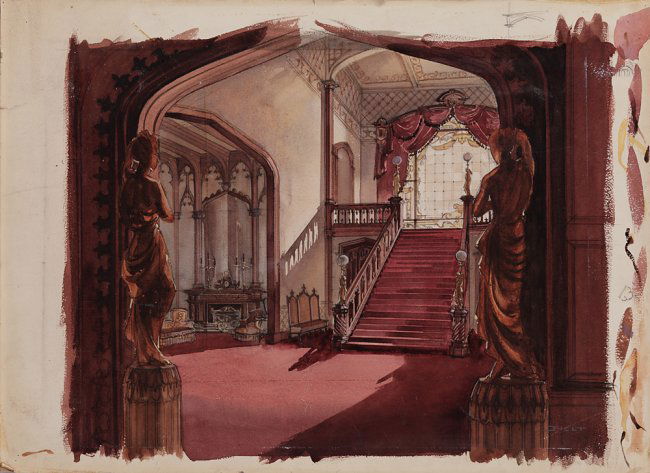Using examples from Menzies' surviving art work (a sketchbook was miraculously saved from the attic of his home before the building was razed), Mr. Curtis discussed the contribution of Menzies' amazing eye in creating the look and feel of the film. Gone with the Wind was always going to be a Technicolor film; this gave Menzies the opportunity to use color in the telling of the story. Mr. Curtis pointed out the pastel hues of the early scenes - think of Scarlett entertaining her beaus on the steps of Tara, compared to the deep reds and oranges of the escape from Atlanta. The sketches tell the story of Menzies vision of the film.
Today, we see the term "production designer" on all films, but Menzies was the first person to have that title; in fact, it was created to describe his unique contribution to filmmaking. He won the first awarded Oscar in Art Design for his work in The Dove and Tempest (both in 1929) and was given a special Oscar for Production Design in 1939 for Gone with the Wind. Of course, there WAS no Production Design award at that point - the Oscar in that category was only renamed (from Art Direction) in 2012.
In 2016, the Art Director's Guild instituted an award named after William Cameron Menzies. The first awardee was Robert Osborne, "for his work in championing classic motion pictures."
Menzies would eventually go on to try his hand at film direction - Things to Come (1936) and Invaders from Mars (1953) are the two that are most highly regarded. But his credits in this area cannot surpass his credits in production design. With films like Kings Row (1942), Our Town (1940) and Made for Each Other (1939), he created a vocabulary of images.
I'll leave you this the video of an interview with Jim Curtis:



No comments:
Post a Comment
Thanks for your interest in this blog. Your comments will be moderated to minimize spam to the website. Thanks for understanding.